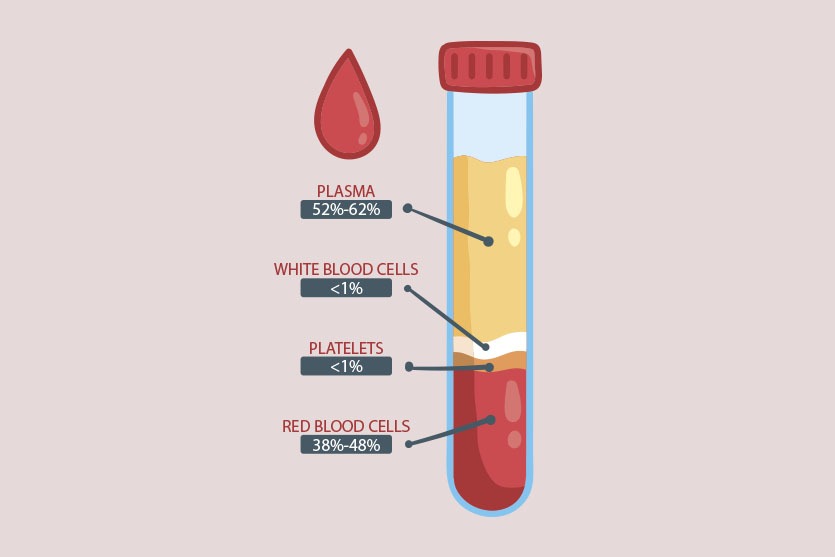
Blood platelets: their vital role and importance in treating diseases and surgeries
Introduction
Too often, we overlook the little heroes inside our body, those tiny elements that carry with them the power of healing and protection. Those elements that remain hidden in the components of our blood, one of them is “blood platelets”, the vital element that carries with it many secrets and vital functions within our bodies.
Platelets, or thrombocytes as they are known, are the little soldiers whose importance is hidden deep within the composition of our blood. These tiny cells have a role that is no less important than larger organs in the healing and protection process. It is not only limited to stopping bleeding wounds, but also has many capabilities that extend to the areas of treatment and regeneration within our bodies.
This journey will take us into the small world inside our blood, exploring the role of blood platelets and their effects on our health and healing. We’ll take a deep dive into how these tiny cells function in blood clotting and how they impact medical treatments and various disease states.
Let us arm ourselves with deeper knowledge and understanding about these small cells that carry within them the secrets of healing and protection, blood platelets, and discover the secret of their vital role and effective importance in our health and treatment.
Blood platelets, do you know what they are and what their vital role is in the health of the body? They are an essential part of blood, those small cells that play a crucial role in the regeneration and healing processes within the body. In this article, we will take a deep look at blood platelets and their vital role in treatment and healing processes.
What are blood platelets?
Platelets, or thrombocytes, are small, non-abstained cells found in the blood. It is produced in the bone marrow and plays a crucial role in the blood clotting process and stopping bleeding when an injury occurs. Blood platelets are extremely important in the healing and regeneration processes within the body.
The blood clotting process depends mainly on the presence of platelets. When blood vessels are injured, blood platelets deposit in the damaged area and interact with certain proteins to form a clot that stops bleeding. This process is crucial to prevent excess blood loss and maintain life cycle stability.
In addition to their role in the clotting process, blood platelets also play an important role in the healing and cellular renewal processes within the body. It is involved in repairing damaged tissues and organs, and promotes growth and regeneration processes to maintain tissue health.
There are diseases and conditions that affect blood platelets, such as an increase or decrease in their number. A high platelet count (thrombocytosis) may increase the risk of blood clots, while a low platelet count (thrombocytopenia) may increase the risk of bleeding.
These small cells, blood platelets, are of great importance to the body’s various systems. It plays a vital role in the healing process and maintaining healthy circulation, and is an integral part of the vital processes that maintain the body’s stability and normal functions.
The importance of blood platelets in treatment and surgery
Platelets, those tiny, vital cells, play a crucial role in medical treatments and surgeries. Here’s why platelets are important in these contexts:
- The process of clotting and stopping bleeding: Blood platelets are one of the main factors in the clotting process. When a wound occurs, blood platelets collect in the injured area to form a clot and stop the bleeding. This process is crucial to prevent excess blood loss and maintain life cycle stability.
- Surgeries and acute injuries: During surgical operations, the patient may require replacement of lost platelets, which is essential for maintaining blood clotting balance. The use of platelets in these cases reduces the risk of severe bleeding during and after surgery.
- Treatments for blood diseases: Blood platelets play an important role in treating diseases associated with a deficiency or increase in their number, such as a decrease in blood platelets (thrombocytopenia) or an increase in them (thrombocytosis). Treatments targeting blood platelets contribute to improving patients’ condition.
- Cancer treatments and cell therapies: In cases of cancer treatment, treatments targeting blood platelets can be used to limit the growth of cancerous tumors and reduce the risk of their spread. In addition, platelets play a role in cellular regeneration and healing processes after cellular therapies.
Blood platelets are of great importance in maintaining human health and helping the body recover. It is not only limited to stopping bleeding, but has a wide-ranging role in many medical treatments and surgical interventions. It maintains blood circulation and promotes healing processes, making it a vital component in medicine and healthcare.
Formation and role of blood platelets
The way blood platelets work involves a complex process within the body that begins in the bone marrow. Here’s an overview of how blood platelets form and work:
- Formation of blood platelets: The formation of blood platelets begins in the bone marrow, where they arise through a process called “megakaryocytes,” which is the process of forming giant cells (megakaryocytes). Megacaryocytes grow and clump together to form blood platelets.
- Circulation: After their formation, blood platelets move into the circulation. It is transported through blood vessels to various parts of the body.
- Response to injury: When injury or damage occurs to blood vessels, blood platelets accumulate in the damaged area. This assembly occurs in response to chemical signals secreted by damaged tissues.
- Clotting process: The primary role of blood platelets is to contribute to the clotting process. Platelets react with certain proteins in the blood and form a clot that helps stop bleeding. The platelets clump together to create the clot that closes the gaps in the blood vessels.
- Renewal and synthesis: Blood platelets are considered part of the blood life cycle, as they are constantly renewed and their stock is renewed in the body through new synthesis processes in the bone marrow.
This process depends on a delicate balance between various factors in the blood and surrounding tissue, and it also requires the presence of regulatory factors and precise chemical signals to stimulate and regulate the aggregation and function of blood platelets when needed.
Platelet separators
There are several devices used in the process of separating blood platelets, and these devices include the following technologies:
- Centrifuge: Centrifuge is used to separate blood components, including platelets, by applying high-speed rotary forces. These forces allow the separation of different blood cells and liquid components based on their density differences, which can be used to obtain a higher platelet concentration.
- Filtration devices: Filtration devices rely on the use of membranes or filters to separate blood platelets and cells from other liquid components in the blood. Filtration is optionally used to trap blood platelets while the remaining blood is filtered.
- Automated centrifuges: They rely on modern technologies to separate blood components. Automated centrifuges use centrifugal forces to separate blood components. These devices can be adjusted to obtain a specific concentration of platelets.
- Sedimentation techniques: These techniques are used, which are based on the principle of sedimentation of various components in the blood by gravity. They can be used to separate platelets, plasma and other blood cells.
- Pneumatic sieve separation devices: These devices rely on separation techniques using a pneumatic sieve that can separate blood components based on their size and physical properties.
These devices and techniques are used in medical laboratories and hospitals to separate blood platelets for various purposes, such as research experiments or preparing blood components for various platelet-based treatments.
Conclusion
Blood platelets are of great importance in human health and the treatment of many diseases and surgeries. They are not just small cells in the blood, but a vital factor that affects the body’s ability to recover and heal. Did you know that platelet donation can save the lives of many people? There is no doubt that understanding the role of blood platelets enhances awareness of their importance and highlights the importance of donating blood to support medical treatments and save lives.









Darius4190
April 28, 2025Very good https://is.gd/N1ikS2
Peter553
April 29, 2025Very good https://is.gd/N1ikS2
Elinor4805
April 30, 2025Awesome https://is.gd/N1ikS2